Lawn grass types that drive out weeds
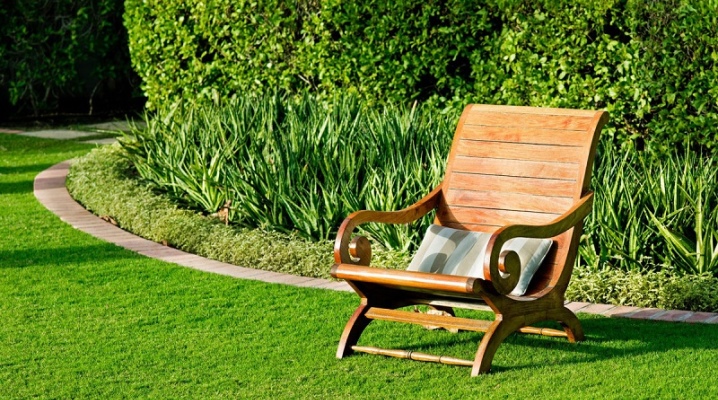
Many owners of country houses with plots make beautiful and neat lawns around their buildings. When creating them, it is recommended to select various types of grasses that will displace weeds. Today we will talk about which plants can be attributed to this group and how to properly care for them.
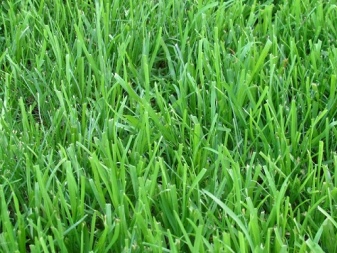
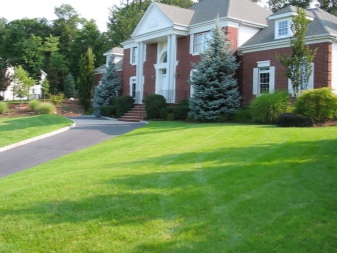
Varieties of herbs
Nowadays, there is a huge variety of lawn grasses that can help control weeds. All of them have a high level of resistance to moisture absorption, drought, and sudden changes in temperature. In addition, most of these plants are undersized. Such varieties are much easier to cut.
The most common types of such perennial grass for lawns include the following varieties.
- Meadow bluegrass. This plant begins to grow actively in early spring, so it is recommended to plant it before winter. This species grows rather quickly. Bluegrass easily tolerates sudden changes in temperature, including severe cold, gusts of wind. After planting, the grass will be able to rise every year for ten years. In the fourth year, the variety acquires the ability to drive out weeds. Before this period, the stems of the plant are still too thin and weak for this. Meadow bluegrass reproduces by self-pollination. There are several main varieties of this herb, including Dolphin, Compact. All of them are suitable for lawn decoration.
- Red fescue. This variety has an unusual bright green color of the leaf plates. Fescue can grow well even on those lands that are not fertile. It easily tolerates drought, low temperatures, poor lighting. In addition, the plant practically does not absorb moisture. The fescue rhizome is well developed. At the same time, the turf layer can reach 20 centimeters, so the grass is often used to strengthen the soil.
- Ryegrass. This lawn grass belongs to the thermophilic group. At the appropriate temperature, it is able to keep its leaves green until December. Ryegrass easily tolerates trampling. After beveling, the plant will not lose its softness and resistance to various diseases and harmful parasites. The total life span is about 5-7 years.
- Microclover. Such a lawn grass has a special beautiful appearance, therefore it is often used in the design of land plots. Unlike ordinary meadow clover, it has smaller leaf blades. The total life span is about 8 years. This pusher grass requires little maintenance, but it should be watered periodically. Microclover perfectly tolerates temperature changes. But do not plant this clover plant near vegetable gardens and orchards, as it begins to grow too wide in width too quickly, and this can lead to the fact that clover will simply displace all crops.
- Pole grass escaping. This species belongs to the group of low-growing cereals. She will require haircuts only 3-4 times per season, so it is convenient to plant it on the site. At the same time, the grass grows in height rather slowly, but it grows strongly and quickly in width.
The bent grass can grow on almost all types of soil, but at the same time it prefers well-lit places. In the first year of life and during severe droughts, it needs the most abundant watering.
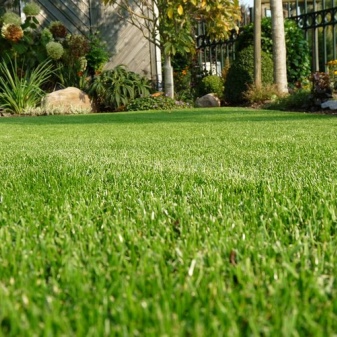

Overview of lawn mixtures
In specialized stores, you can buy ready-made mixtures with various varieties and types of lawn grass that destroy weeds on the site. The most common are the following masses, which are considered the best for giving.
- "Ornamental". This weed control mixture consists of bluegrass, ragrais and red fescue. She can easily adapt to almost any type of soil, any climatic conditions. It is this type that is often used for abundant landscaping of city parks and squares.
- Lilliputian. This lawn mixture is also capable of killing weeds, it consists of the same varieties as the previous version, but at the same time, shorter varieties are used. The mass allows you to create a dense and low grass carpet. Plants are able to easily adapt to different climatic conditions and different soils.
- "Dwarf". This lawn mixture includes bluegrass and fescue (red and meadow). The total height of the formed lawn will be only 3-5 centimeters. Varieties can tolerate low temperatures and severe frosts for a long period of time, therefore it is the "Gnome" that is often used for planting in temperate or severe climates. In addition, all the herbs that make up the composition have good resistance to trampling; in the first year after planting, the grass will grow as slowly as possible.
- Canada Green. This weed-killing lawn mixture includes several varieties of fescue and ragrais, as well as meadow bluegrass. Canada Green is most commonly used for landing in northern areas.
Plants can easily tolerate high and low temperatures ranging from +40 to -40 degrees. The mixture is quite resistant to adverse external influences.
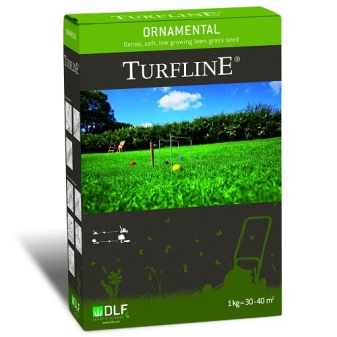
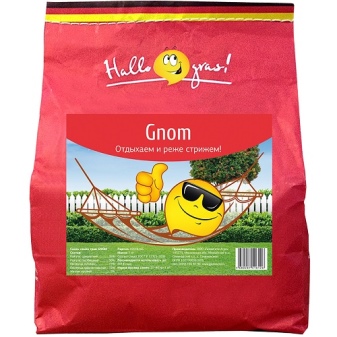
How to plant?
In order for the lawn to emerge and grow fully, it is necessary to follow some important planting rules. Depending on the type of lawn plants, they can be planted using ordinary seeds or seedlings.
Timing
Planting times may vary depending on the type of grass. Most often, they are planted in the spring period of the year immediately after the snow masses disappear. Certain varieties can be sown during the summer and even in September.
It is not worth planting the grass later in September, since it simply does not have time to grow strong enough before the onset of frost and will soon die. Remember that if you decide to plant in the summer, then it is better to wait for stable cloudy weather, because during such periods the heat begins to subside a little, and the soil will be as moisturized as possible.


Soil preparation
Before planting seeds or seedlings in the ground, it should be carefully prepared. To do this, you need to remove all the debris from the site and align it. Then all weeds on the ground should be removed. Typically, this procedure is divided into two separate steps at intervals of several weeks. Each of these stages is accompanied by a special chemical treatment with appropriate preparations. Only after that do they start cleaning up dried grass residues and digging up the earth.
Later, you will need to apply the necessary mineral fertilizers to the soil. This should be done only after complete removal of the weeds. Organic elements can also be used.
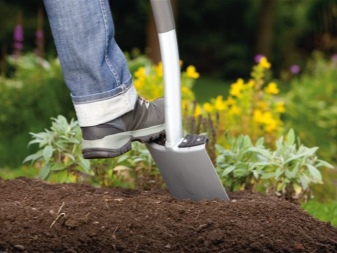

Landing technology
First you need to compact the soil well. This can be done using a special skating rink. If you purchased plant seeds, then they just need to be evenly distributed over the area of the site. If necessary, this procedure can be repeated. Sowing is processed once with a fan rake. After the seed layer is formed, you need to scatter a layer of finished compost on top. If not, you can use straw. Further, the earth is thoroughly moistened. It is better to do this with a spray bottle.
If you purchased seedlings, the planting algorithm remains almost the same. In this case, it will be necessary to form small holes for planting the material, observing a small distance, which will depend on the specific type of grass.


Care Tips
Typically, most types of low-growing soft lawn grass do not require special maintenance. The regularity of watering, top dressing and fertilization will depend on the conditions in which the lawn grows, as well as on the type of soil. Before using fertilizers, you must read the instructions in detail. In it you can find the features of their use, as well as indications of what conditions they are intended for.
The annual feeding rate should be applied gradually in small quantities. Most often, only 5 or 6 soil fertilization procedures are carried out during the year. They should be carried out at the same time intervals. At the end of each season, liming of the soil is recommended. This is done using special dolomite flour or ash. Also, do not forget to remove weeds when leaving. Even when planting plants that displace them, such pests can appear on the site. In this case, you need to process or remove it all manually using a fan rake.
Regular mowing of the lawn is important. The very first procedure should be carried out 1.5-2 months after planting. In this case, the height of the grass should be about 7 centimeters. Mowing a lower lawn should not be carried out, as this can lead to the death of vegetation. Remember to ventilate the soil early in the spring. Also remember to remove the ice crust from the site.
To significantly increase the density of the turf, you will need to trim once or twice a week. But at the same time, the lawn vegetation will also become denser and more even.
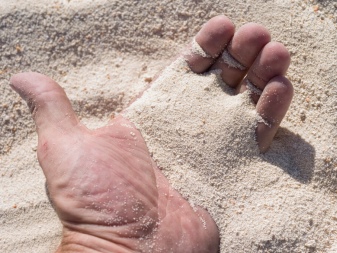
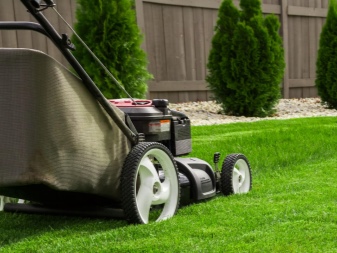
Diseases and pests
Lawn grass is sometimes exposed to adverse external influences that can lead to the death of plants. Most often they are exposed to the following diseases.
- Fusarium. It is transmitted either through the air or through contaminated land. The disease can develop actively from late autumn to early spring. If affected, a large amount of woven thin grass of a gray or pale pink hue can be seen on the site. Over time, the vegetation gradually begins to dry out and die. You can fight this disease with the help of special fungicides.
- Powdery mildew. This lawn grass disease develops actively in summer at high humidity levels. White spots begin to appear on the lawn, which over time begin to thicken, at the same time the vegetation dries up. Powdery mildew can appear as a result of excess moisture in the soil or due to an excess of nitrogen-containing fertilizers.
- Rust. In case of damage, spots of reddish-yellow shades will appear on the lawn. Such a disease, as a rule, appears with insufficient illumination of the land. Sometimes rust appears due to a strong lack of mineral fertilizers. In this case, the turf should be thoroughly fertilized. In the summer period, it is worth establishing an irrigation regime. All affected areas will need to be cleaned every 2 or 3 days. This will need to be done until the stems are completely healthy.
- Red threadiness. This disease affects lawns in case of inadequate maintenance. Most often, it appears in early May. The grass in some places begins to acquire a pink color, and you will also notice the appearance of small pinkish spores of a filamentous type. They will braid the top of the vegetation. Gradually, the plots will dry up and die. In this case, it will be enough to slightly feed the turf layer, as well as comb it thoroughly in order to remove all diseased residues and significantly improve aeration.
Sometimes lawns are attacked by parasites.Among them, parasitic plants can be distinguished separately: mosses, algae, mushrooms, lichens. They appear only in case of poor care, growing in areas where the grass does not receive the necessary nutrition. If the soil is healthy, then over time, such pests will disappear by themselves.
To get rid of parasites, liming of the soil can be applied. This will lead to a decrease in its acidity level. Most often, this procedure is sufficient to destroy pests.
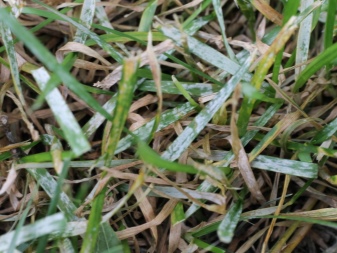
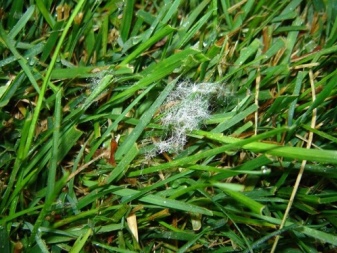
In the next video, you will find an overview of various types of lawn grasses six months after sowing.



































































The comment was sent successfully.